规范
--------------------------------------------------------------------------------
Create a Bug Tracking System Early and Not Often
The earlier people get used to using a bug tracking system the better. If you are 3/4 through a project and then install a bug tracking system it won't be used. You need to install a bug tracking system early so people will use it.
Programmers generally resist bug tracking, yet when used correctly it can really help a project:
Problems aren't dropped on the floor.
Problems are automatically routed to responsible individuals.
The lifecycle of a problem is tracked so people can argue back and forth with good information.
Managers can make the big schedule and staffing decisions based on the number of and types of bugs in the system.
Configuration management has a hope of matching patches back to the problems they fix.
QA and technical support have a communication medium with developers.
Not sexy things, just good solid project improvements.
FYI, it's not a good idea to reward people by the number of bugs they fix :-)
Source code control should be linked to the bug tracking system. During the part of a project where source is frozen before a release only checkins accompanied by a valid bug ID should be accepted. And when code is changed to fix a bug the bug ID should be included in the checkin comments.
Sources
Several projects have found DDTS a workable system (I 've not verified this link for this PHP release, DDTS may not work for PHP). There is also a GNU bug tracking system available. Roll your own is a popular option but using an existing system seems more cost efficient.
--------------------------------------------------------------------------------
Honor Responsibilities
Responsibility for software modules is scoped. Modules are either the responsibility of a particular person or are common. Honor this division of responsibility. Don't go changing things that aren't your responsibility to change. Only mistakes and hard feelings will result.
Face it, if you don't own a piece of code you can't possibly be in a position to change it. There's too much context. Assumptions seemingly reasonable to you may be totally wrong. If you need a change simply ask the responsible person to change it. Or ask them if it is OK to make such-n-such a change. If they say OK then go ahead, otherwise holster your editor.
Every rule has exceptions. If it's 3 in the morning and you need to make a change to make a deliverable then you have to do it. If someone is on vacation and no one has been assigned their module then you have to do it. If you make changes in other people's code try and use the same style they have adopted.
Programmers need to mark with comments code that is particularly sensitive to change. If code in one area requires changes to code in an another area then say so. If changing data formats will cause conflicts with persistent stores or remote message sending then say so. If you are trying to minimize memory usage or achieve some other end then say so. Not everyone is as brilliant as you.
The worst sin is to flit through the system changing bits of code to match your coding style. If someone isn't coding to the standards then ask them or ask your manager to ask them to code to the standards. Use common courtesy.
Code with common responsibility should be treated with care. Resist making radical changes as the conflicts will be hard to resolve. Put comments in the file on how the file should be extended so everyone will follow the same rules. Try and use a common structure in all common files so people don't have to guess on where to find things and how to make changes. Checkin changes as soon as possible so conflicts don't build up.
As an aside, module responsibilities must also be assigned for bug tracking purposes.
--------------------------------------------------------------------------------
PHP文件扩展名
我见过许多种PHP文件的扩展名(.html, .php, .php3, .php4, .phtml, .inc, .class...)
所有浏览者可见页面使用.html
所有类、函数库文件使用.php
理由
扩展名描述的是那种数据是用户将会收到的。PHP是解释为HTML的。
--------------------------------------------------------------------------------
不要不可思议的数字
一个在源代码中使用了的赤裸裸的数字是不可思议的数字,因为包括作者,在三个月内,没人它的含义。例如:
if (22 == $foo) { start_thermo_nuclear_war(); }
else if (19 == $foo) { refund_lotso_money(); }
else if (16 == $foo) { infinite_loop(); }
else { cry_cause_im_lost(); }
在上例中22和19的含义是什么呢?如果一个数字改变了,或者这些数字只是简单的错误,你会怎么想?
使用不可思议的数字是该程序员是业余运动员的重要标志,这样的程序员从来没有在团队环境中工作过,
又或者是为了维持代码而不得不做的,否则他们永远不会做这样的事。
你应该用define()来给你想表示某样东西的数值一个真正的名字,而不是采用赤裸裸的数字,例如:
define("PRESIDENT_WENT_CRAZY", "22");
define("WE_GOOFED", "19");
define("THEY_DIDNT_PAY", "16");
if (PRESIDENT_WENT_CRAZY == $foo) { start_thermo_nuclear_war(); }
else if (WE_GOOFED == $foo) { refund_lotso_money(); }
else if (THEY_DIDNT_PAY == $foo) { infinite_loop(); }
else { happy_days_i_know_why_im_here(); }
现在不是变得更好了么?
--------------------------------------------------------------------------------
Promise of OO
OO has been hyped to the extent you'd figure it would solve world hunger and usher in a new era of world peace. Not! OO is an approach, a philosophy, it's not a recipe which blindly followed yields quality.
Robert Martin put OO in perspective:
OO, when properly employed, does enhance the reusability of software. But it does so at the cost of complexity and design time. Reusable code is more complex and takes longer to design and implement. Furthermore, it often takes two or more tries to create something that is even marginally reusable.
OO, when properly employed, does enhance the software's resilience to change. But it does so at the cost of complexity and design time. This trade off is almost always a win, but it is hard to swallow sometimes.
OO does not necessarily make anything easier to understand. There is no magical mapping between the software concepts and every human's map of the real world. Every person is different. What one person percieves to be a simple and elegant design, another will perceive as convoluted and opaque.
If a team has been able, by applying point 1 above, to create a repository of reusable items, then development times can begin to shrink significantly due to reuse.
If a team has been able, by applying point 2 above, to create software that is resilient to change, then maintenance of that software will be much simpler and much less error prone.
--------------------------------------------------------------------------------
Thin vs. Fat Class Interfaces
How many methods should an object have? The right answer of course is just the right amount, we'll call this the Goldilocks level. But what is the Goldilocks level? It doesn't exist. You need to make the right judgment for your situation, which is really what programmers are for :-)
The two extremes are thin classes versus thick classes. Thin classes are minimalist classes. Thin classes have as few methods as possible. The expectation is users will derive their own class from the thin class adding any needed methods.
While thin classes may seem "clean" they really aren't. You can't do much with a thin class. Its main purpose is setting up a type. Since thin classes have so little functionality many programmers in a project will create derived classes with everyone adding basically the same methods. This leads to code duplication and maintenance problems which is part of the reason we use objects in the first place. The obvious solution is to push methods up to the base class. Push enough methods up to the base class and you get thick classes.
Thick classes have a lot of methods. If you can think of it a thick class will have it. Why is this a problem? It may not be. If the methods are directly related to the class then there's no real problem with the class containing them. The problem is people get lazy and start adding methods to a class that are related to the class in some willow wispy way, but would be better factored out into another class. Judgment comes into play again.
Thick classes have other problems. As classes get larger they may become harder to understand. They also become harder to debug as interactions become less predictable. And when a method is changed that you don't use or care about your code will still have to be retested, and rereleased.
--------------------------------------------------------------------------------
Recent Changes
2000-11-16. Release
--------------------------------------------------------------------------------
? Copyright 1995-2000. Todd Hoff and Fredrik Kristiansen. All rights reserved.
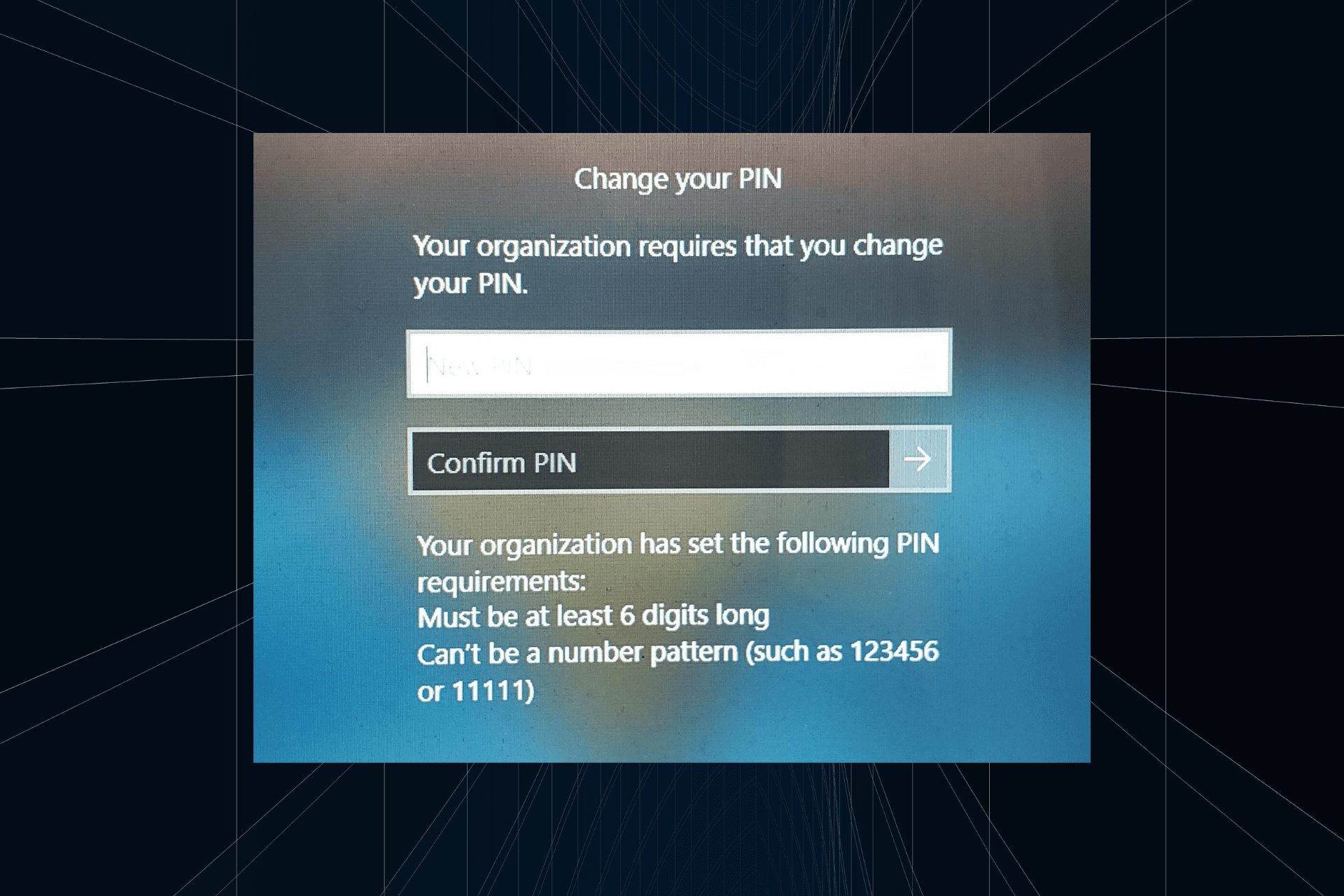 解决方法:您的组织要求您更改 PIN 码Oct 04, 2023 pm 05:45 PM
解决方法:您的组织要求您更改 PIN 码Oct 04, 2023 pm 05:45 PM“你的组织要求你更改PIN消息”将显示在登录屏幕上。当在使用基于组织的帐户设置的电脑上达到PIN过期限制时,就会发生这种情况,在该电脑上,他们可以控制个人设备。但是,如果您使用个人帐户设置了Windows,则理想情况下不应显示错误消息。虽然情况并非总是如此。大多数遇到错误的用户使用个人帐户报告。为什么我的组织要求我在Windows11上更改我的PIN?可能是您的帐户与组织相关联,您的主要方法应该是验证这一点。联系域管理员会有所帮助!此外,配置错误的本地策略设置或不正确的注册表项也可能导致错误。即
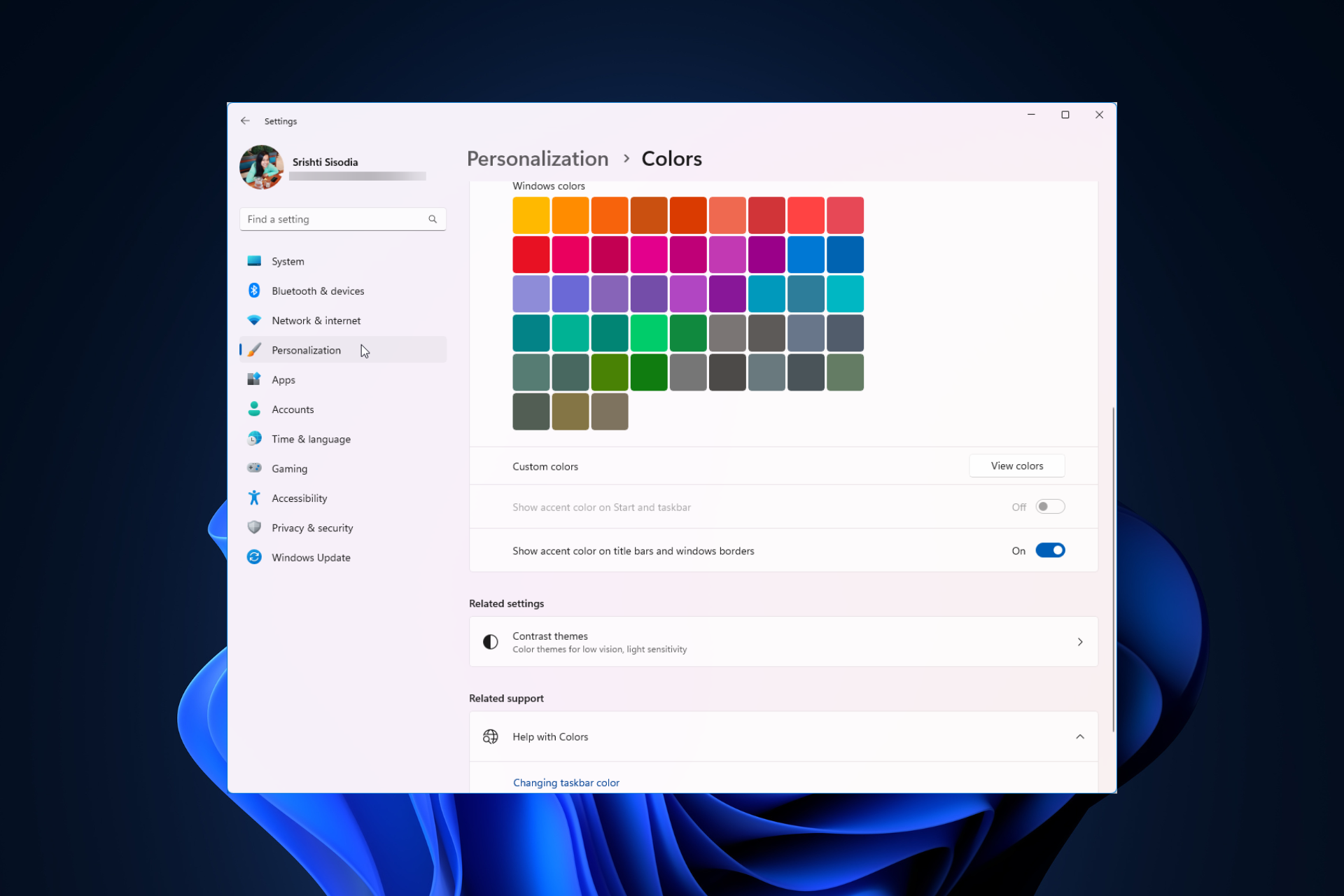 Windows 11 上调整窗口边框设置的方法:更改颜色和大小Sep 22, 2023 am 11:37 AM
Windows 11 上调整窗口边框设置的方法:更改颜色和大小Sep 22, 2023 am 11:37 AMWindows11将清新优雅的设计带到了最前沿;现代界面允许您个性化和更改最精细的细节,例如窗口边框。在本指南中,我们将讨论分步说明,以帮助您在Windows操作系统中创建反映您的风格的环境。如何更改窗口边框设置?按+打开“设置”应用。WindowsI转到个性化,然后单击颜色设置。颜色更改窗口边框设置窗口11“宽度=”643“高度=”500“>找到在标题栏和窗口边框上显示强调色选项,然后切换它旁边的开关。若要在“开始”菜单和任务栏上显示主题色,请打开“在开始”菜单和任务栏上显示主题
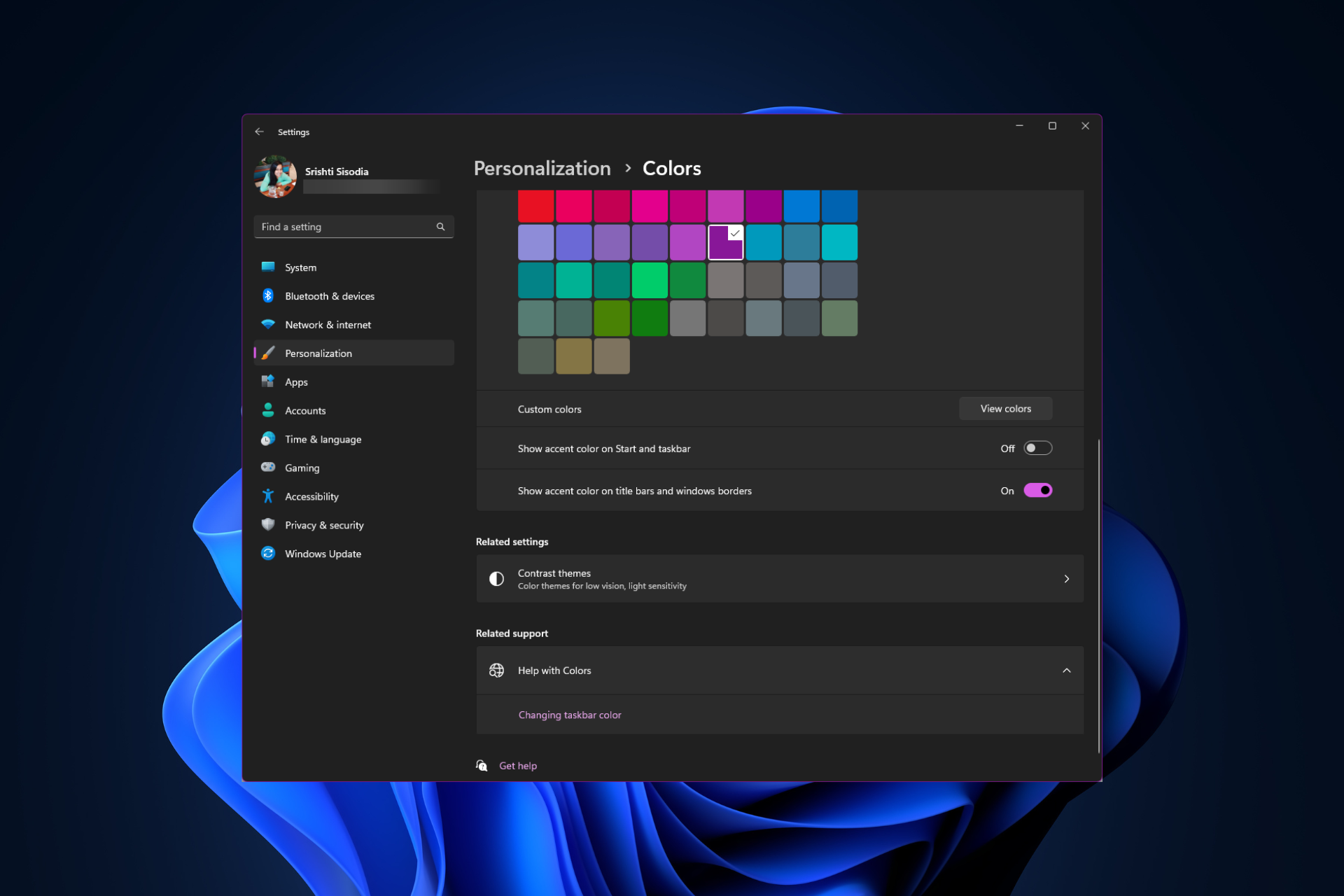 如何在 Windows 11 上更改标题栏颜色?Sep 14, 2023 pm 03:33 PM
如何在 Windows 11 上更改标题栏颜色?Sep 14, 2023 pm 03:33 PM默认情况下,Windows11上的标题栏颜色取决于您选择的深色/浅色主题。但是,您可以将其更改为所需的任何颜色。在本指南中,我们将讨论三种方法的分步说明,以更改它并个性化您的桌面体验,使其具有视觉吸引力。是否可以更改活动和非活动窗口的标题栏颜色?是的,您可以使用“设置”应用更改活动窗口的标题栏颜色,也可以使用注册表编辑器更改非活动窗口的标题栏颜色。若要了解这些步骤,请转到下一部分。如何在Windows11中更改标题栏的颜色?1.使用“设置”应用按+打开设置窗口。WindowsI前往“个性化”,然
 OOBELANGUAGE错误Windows 11 / 10修复中出现问题的问题Jul 16, 2023 pm 03:29 PM
OOBELANGUAGE错误Windows 11 / 10修复中出现问题的问题Jul 16, 2023 pm 03:29 PM您是否在Windows安装程序页面上看到“出现问题”以及“OOBELANGUAGE”语句?Windows的安装有时会因此类错误而停止。OOBE表示开箱即用的体验。正如错误提示所表示的那样,这是与OOBE语言选择相关的问题。没有什么可担心的,你可以通过OOBE屏幕本身的漂亮注册表编辑来解决这个问题。快速修复–1.单击OOBE应用底部的“重试”按钮。这将继续进行该过程,而不会再打嗝。2.使用电源按钮强制关闭系统。系统重新启动后,OOBE应继续。3.断开系统与互联网的连接。在脱机模式下完成OOBE的所
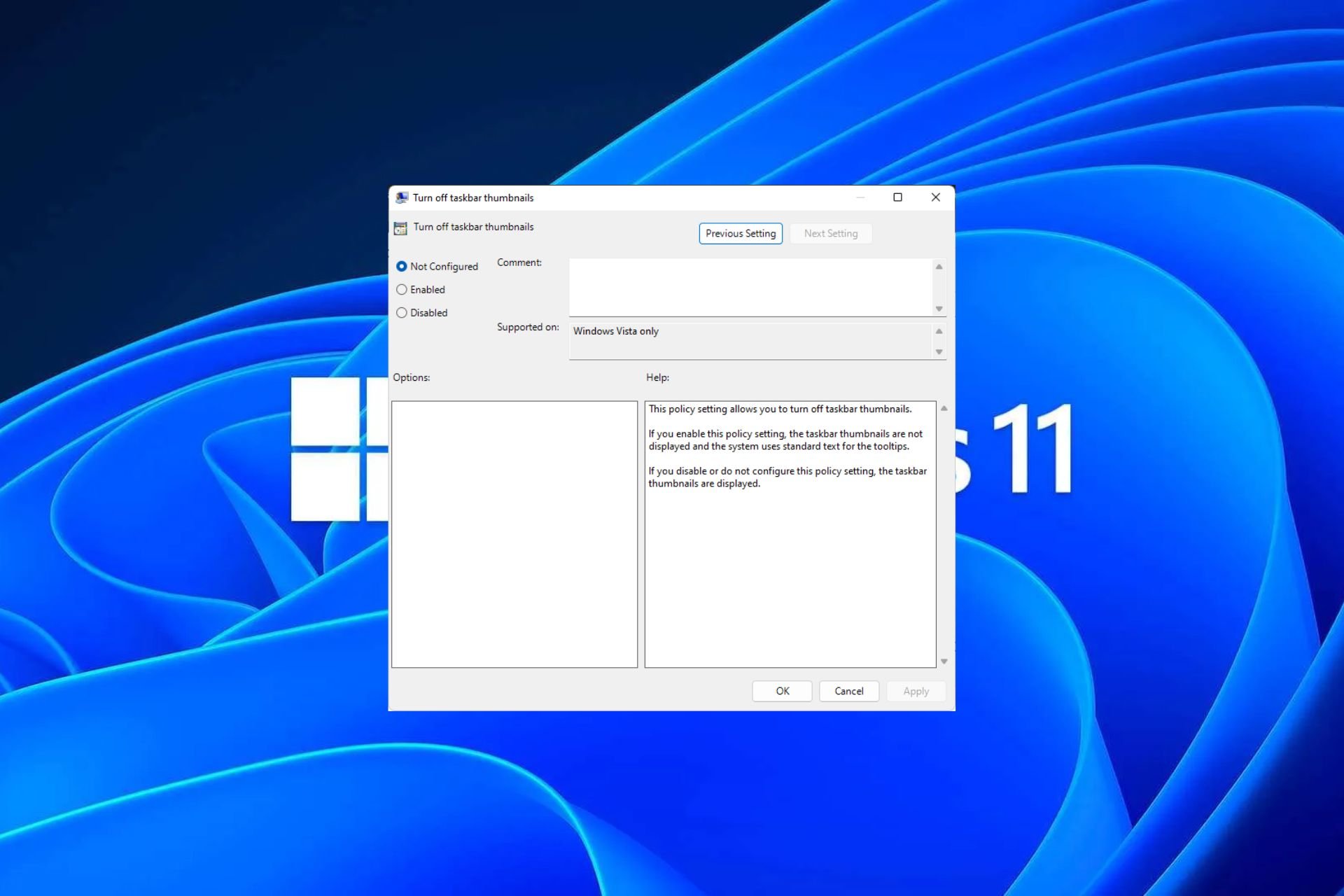 Windows 11 上启用或禁用任务栏缩略图预览的方法Sep 15, 2023 pm 03:57 PM
Windows 11 上启用或禁用任务栏缩略图预览的方法Sep 15, 2023 pm 03:57 PM任务栏缩略图可能很有趣,但它们也可能分散注意力或烦人。考虑到您将鼠标悬停在该区域的频率,您可能无意中关闭了重要窗口几次。另一个缺点是它使用更多的系统资源,因此,如果您一直在寻找一种提高资源效率的方法,我们将向您展示如何禁用它。不过,如果您的硬件规格可以处理它并且您喜欢预览版,则可以启用它。如何在Windows11中启用任务栏缩略图预览?1.使用“设置”应用点击键并单击设置。Windows单击系统,然后选择关于。点击高级系统设置。导航到“高级”选项卡,然后选择“性能”下的“设置”。在“视觉效果”选
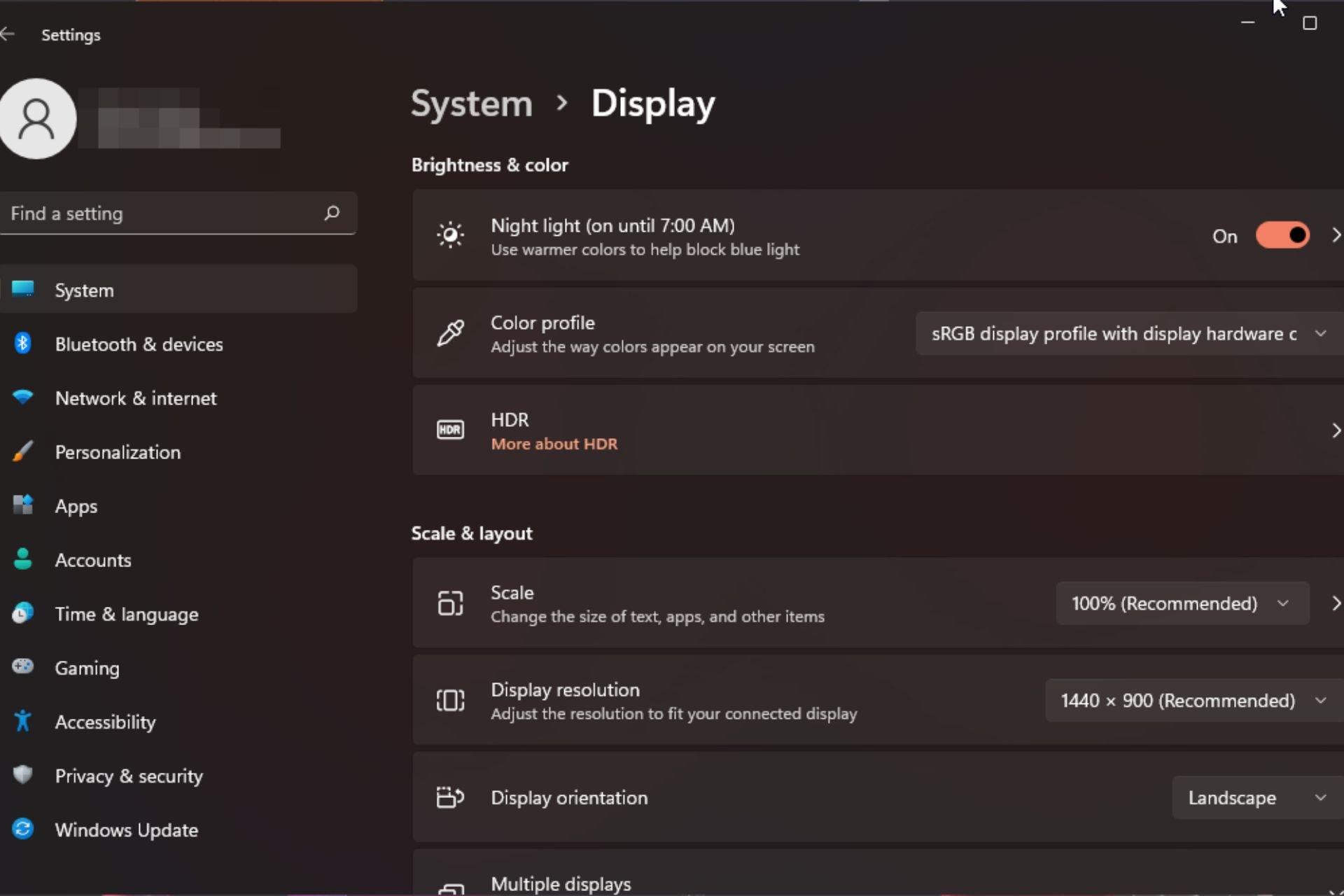 Windows 11 上的显示缩放比例调整指南Sep 19, 2023 pm 06:45 PM
Windows 11 上的显示缩放比例调整指南Sep 19, 2023 pm 06:45 PM在Windows11上的显示缩放方面,我们都有不同的偏好。有些人喜欢大图标,有些人喜欢小图标。但是,我们都同意拥有正确的缩放比例很重要。字体缩放不良或图像过度缩放可能是工作时真正的生产力杀手,因此您需要知道如何对其进行自定义以充分利用系统功能。自定义缩放的优点:对于难以阅读屏幕上的文本的人来说,这是一个有用的功能。它可以帮助您一次在屏幕上查看更多内容。您可以创建仅适用于某些监视器和应用程序的自定义扩展配置文件。可以帮助提高低端硬件的性能。它使您可以更好地控制屏幕上的内容。如何在Windows11
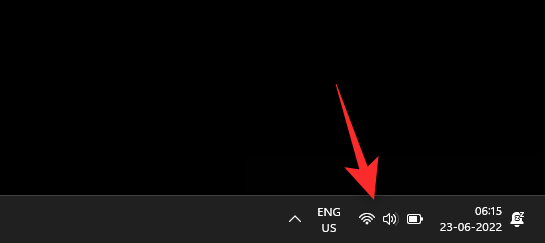 10种在 Windows 11 上调整亮度的方法Dec 18, 2023 pm 02:21 PM
10种在 Windows 11 上调整亮度的方法Dec 18, 2023 pm 02:21 PM屏幕亮度是使用现代计算设备不可或缺的一部分,尤其是当您长时间注视屏幕时。它可以帮助您减轻眼睛疲劳,提高易读性,并轻松有效地查看内容。但是,根据您的设置,有时很难管理亮度,尤其是在具有新UI更改的Windows11上。如果您在调整亮度时遇到问题,以下是在Windows11上管理亮度的所有方法。如何在Windows11上更改亮度[10种方式解释]单显示器用户可以使用以下方法在Windows11上调整亮度。这包括使用单个显示器的台式机系统以及笔记本电脑。让我们开始吧。方法1:使用操作中心操作中心是访问
 如何在Safari中关闭iPhone的隐私浏览身份验证?Nov 29, 2023 pm 11:21 PM
如何在Safari中关闭iPhone的隐私浏览身份验证?Nov 29, 2023 pm 11:21 PM在iOS17中,Apple为其移动操作系统引入了几项新的隐私和安全功能,其中之一是能够要求对Safari中的隐私浏览选项卡进行二次身份验证。以下是它的工作原理以及如何将其关闭。在运行iOS17或iPadOS17的iPhone或iPad上,如果您在Safari浏览器中打开了任何“无痕浏览”标签页,然后退出会话或App,Apple的浏览器现在需要面容ID/触控ID认证或密码才能再次访问它们。换句话说,如果有人在解锁您的iPhone或iPad时拿到了它,他们仍然无法在不知道您的密码的情况下查看您的隐私


热AI工具

Undresser.AI Undress
人工智能驱动的应用程序,用于创建逼真的裸体照片

AI Clothes Remover
用于从照片中去除衣服的在线人工智能工具。

Undress AI Tool
免费脱衣服图片

Clothoff.io
AI脱衣机

AI Hentai Generator
免费生成ai无尽的。

热门文章

热工具

SublimeText3汉化版
中文版,非常好用

SublimeText3 Mac版
神级代码编辑软件(SublimeText3)

螳螂BT
Mantis是一个易于部署的基于Web的缺陷跟踪工具,用于帮助产品缺陷跟踪。它需要PHP、MySQL和一个Web服务器。请查看我们的演示和托管服务。

Dreamweaver CS6
视觉化网页开发工具

DVWA
Damn Vulnerable Web App (DVWA) 是一个PHP/MySQL的Web应用程序,非常容易受到攻击。它的主要目标是成为安全专业人员在合法环境中测试自己的技能和工具的辅助工具,帮助Web开发人员更好地理解保护Web应用程序的过程,并帮助教师/学生在课堂环境中教授/学习Web应用程序安全。DVWA的目标是通过简单直接的界面练习一些最常见的Web漏洞,难度各不相同。请注意,该软件中





